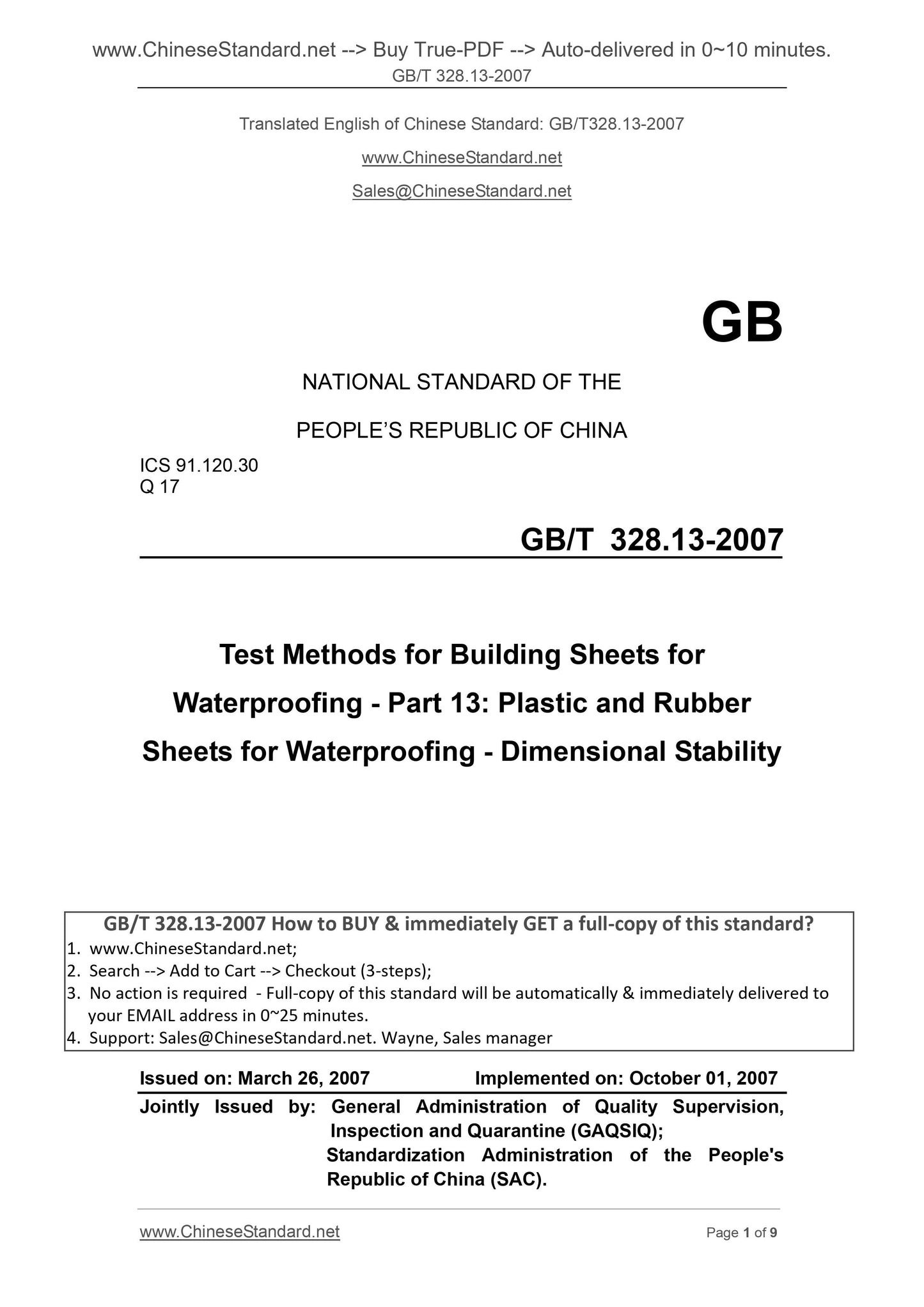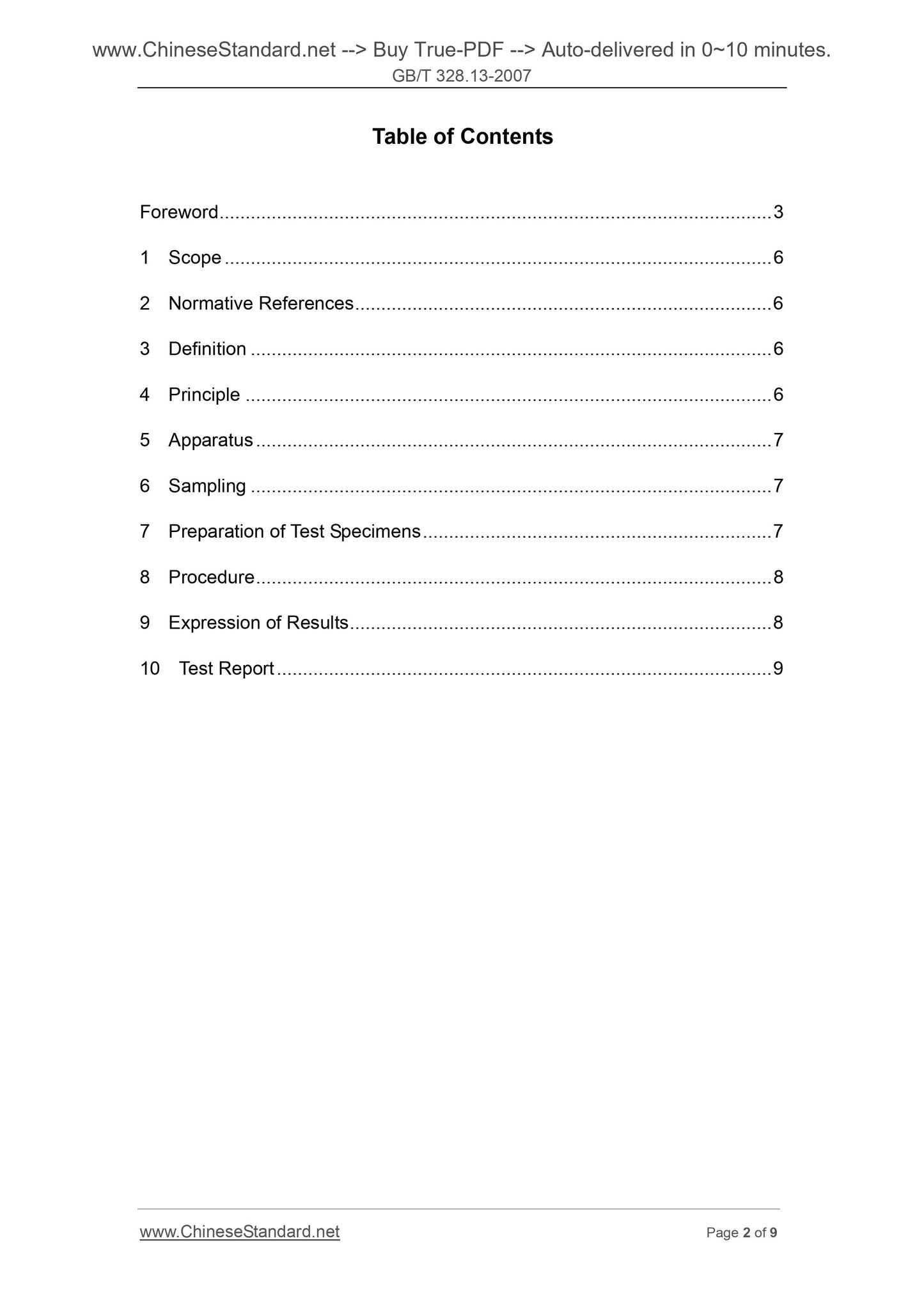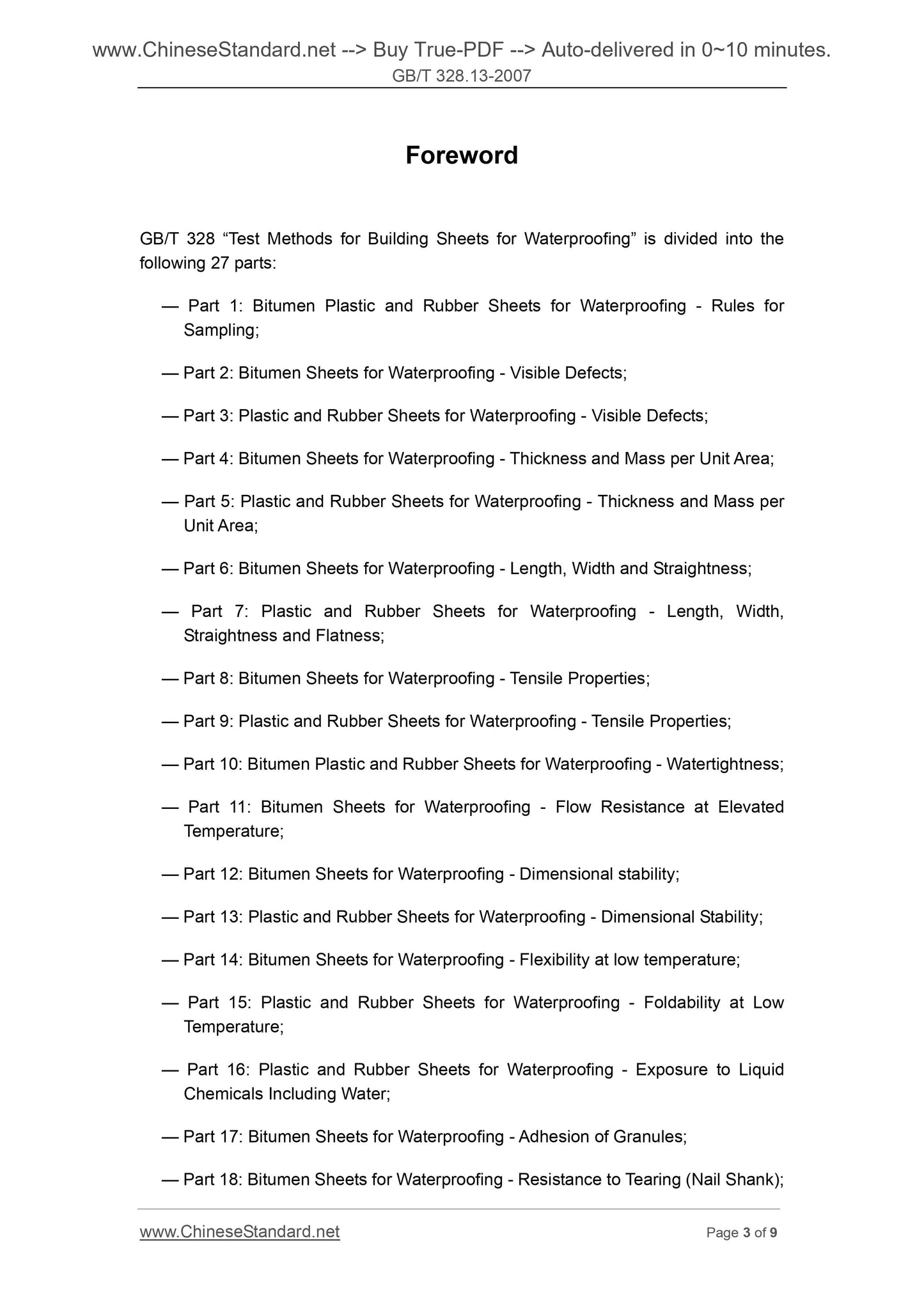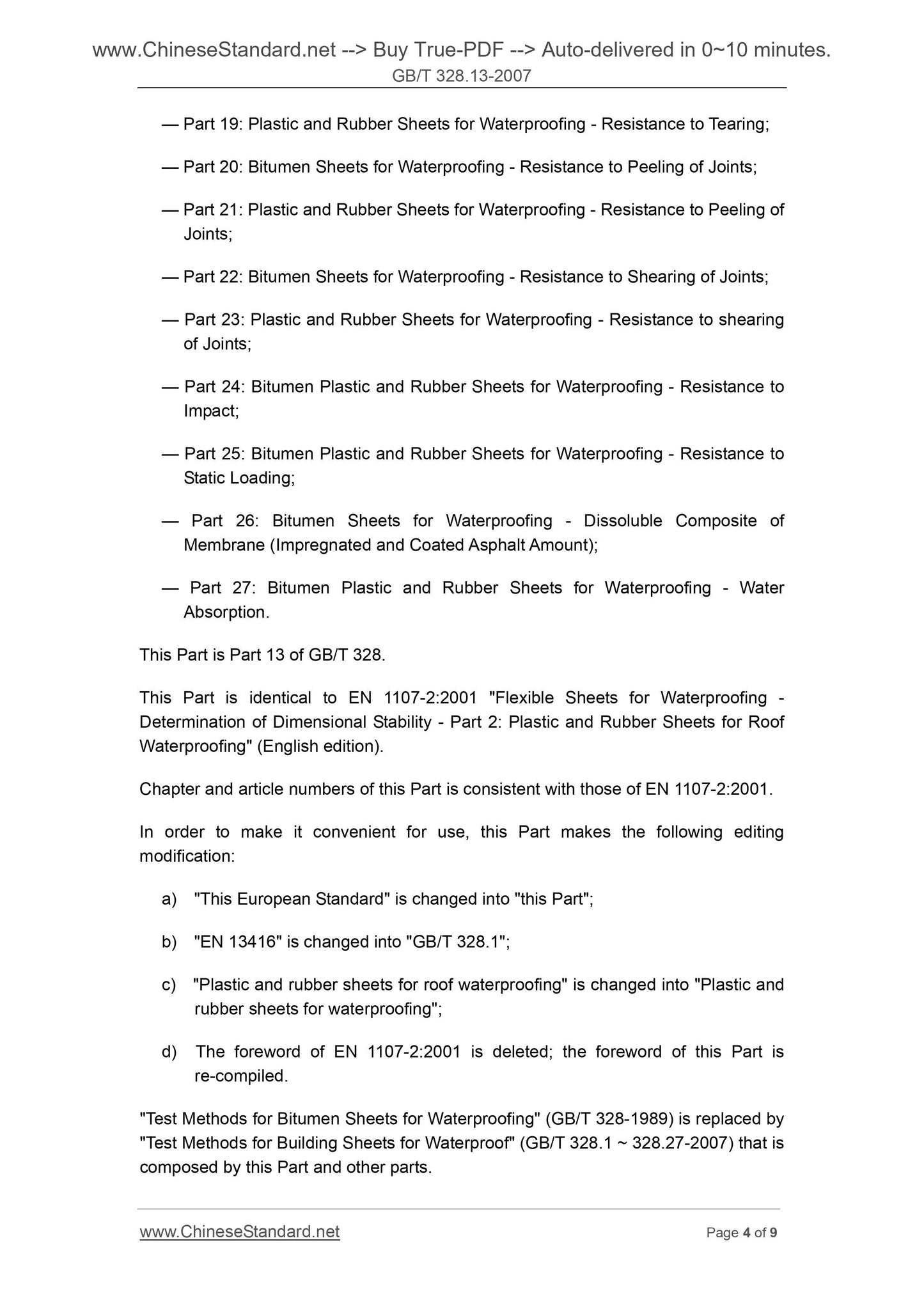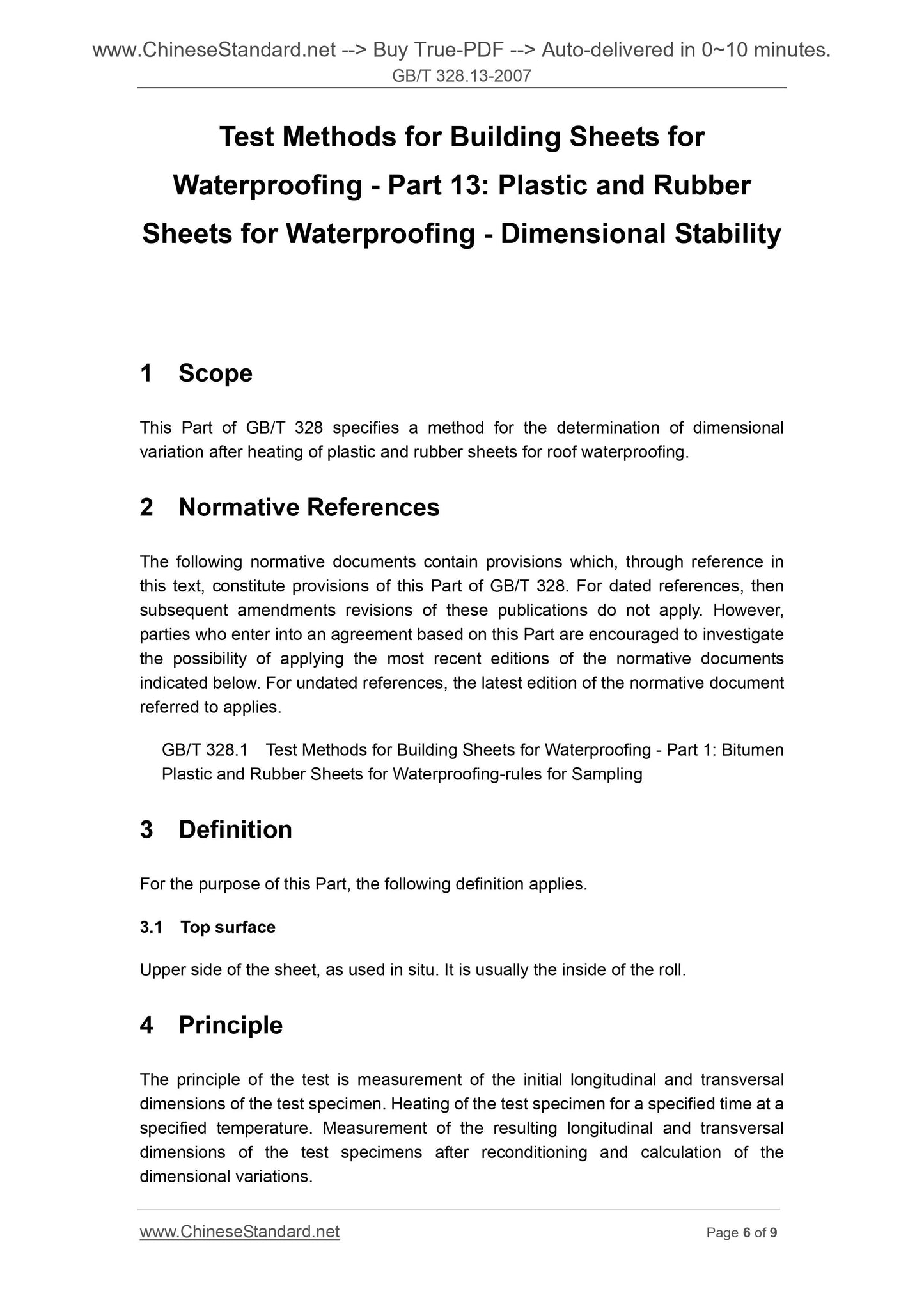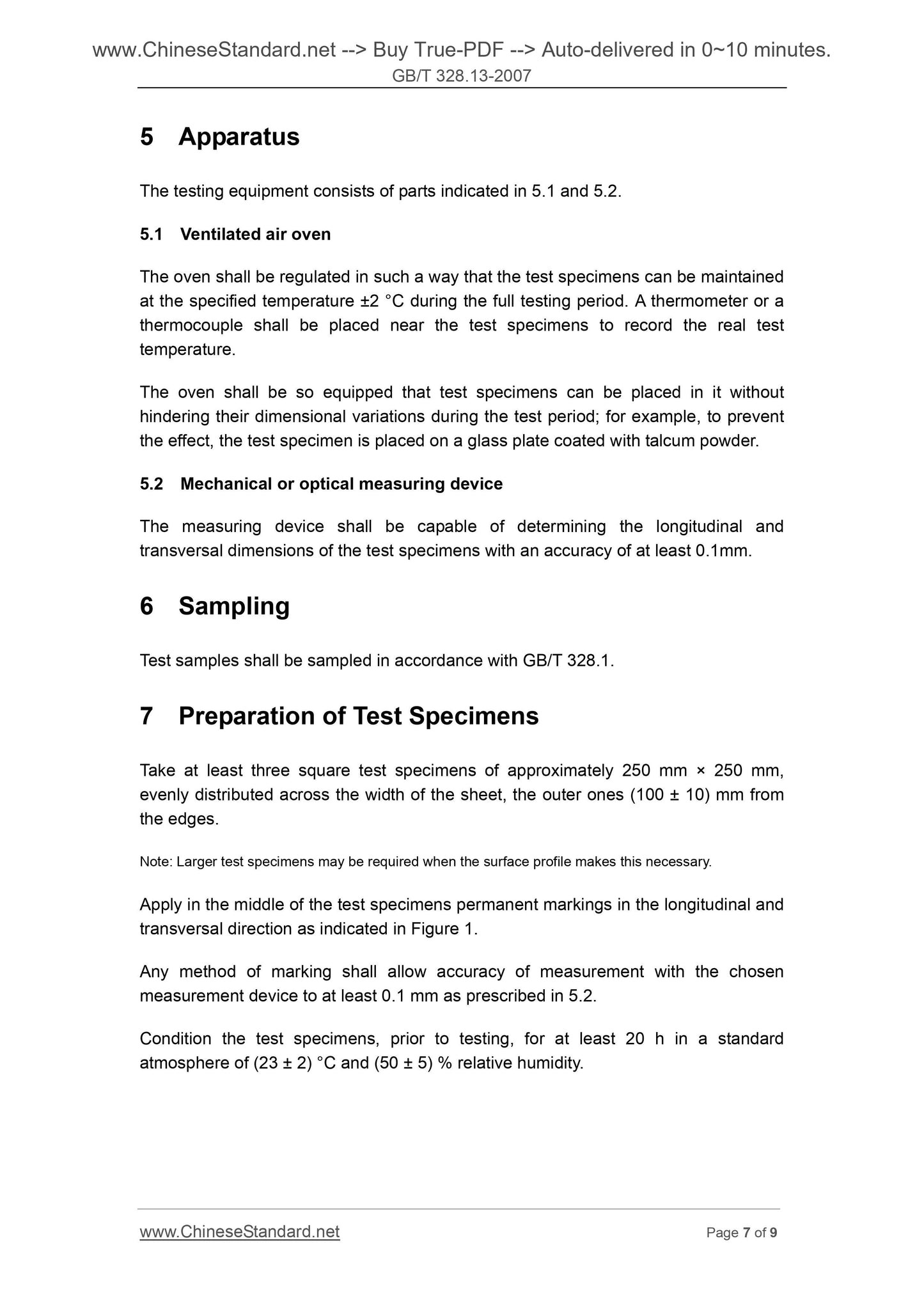1
/
of
6
www.ChineseStandard.us -- Field Test Asia Pte. Ltd.
GB/T 328.13-2007 English PDF (GB/T328.13-2007)
GB/T 328.13-2007 English PDF (GB/T328.13-2007)
Regular price
$70.00
Regular price
Sale price
$70.00
Unit price
/
per
Shipping calculated at checkout.
Couldn't load pickup availability
GB/T 328.13-2007: Test methods for building sheets for waterproofing -- Part 13: Plastic and rubber sheets for waterproofing-dimensional stability
Delivery: 9 seconds. Download (and Email) true-PDF + Invoice.Get Quotation: Click GB/T 328.13-2007 (Self-service in 1-minute)
Newer / historical versions: GB/T 328.13-2007
Preview True-PDF
Scope
This Part of GB/T 328 specifies a method for the determination of dimensionalvariation after heating of plastic and rubber sheets for roof waterproofing.
Basic Data
| Standard ID | GB/T 328.13-2007 (GB/T328.13-2007) |
| Description (Translated English) | Test methods for building sheets for waterproofing -- Part 13: Plastic and rubber sheets for waterproofing-dimensional stability |
| Sector / Industry | National Standard (Recommended) |
| Classification of Chinese Standard | Q17 |
| Classification of International Standard | 91.120.30 |
| Word Count Estimation | 7,768 |
| Date of Issue | 2007-03-26 |
| Date of Implementation | 2007-10-01 |
| Quoted Standard | GB/T 328.1 |
| Regulation (derived from) | China National Standard Approval Announcement2007 No.3 (Total No.103) |
| Issuing agency(ies) | General Administration of Quality Supervision, Inspection and Quarantine of the People's Republic of China, Standardization Administration of the People's Republic of China |
| Summary | This standard specifies the method for the determination of polymer roofing membrane heating dimensional changes. |
Share
